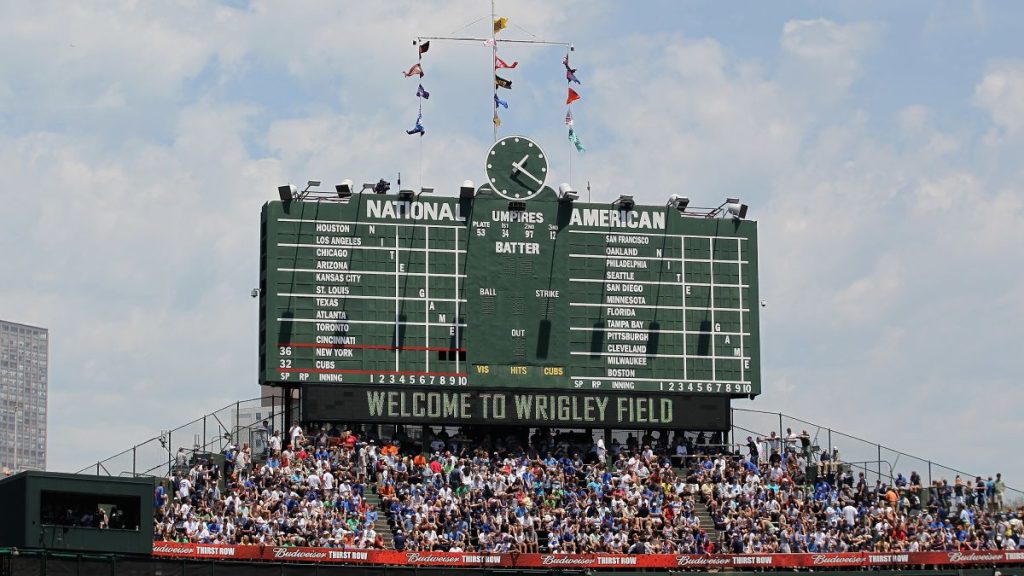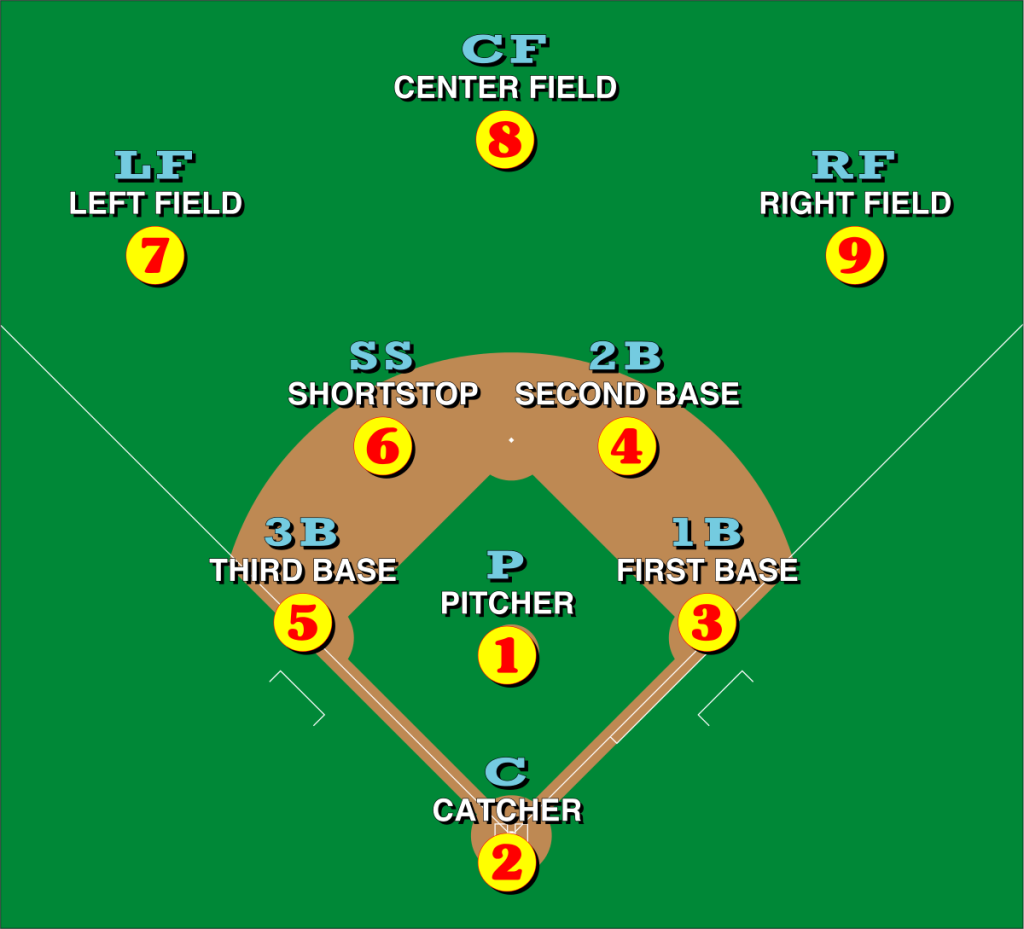Baseball scorekeeping is recording the progression of a game as it unfolds. Keeping the score during a baseball game keeps fans in the loop. However, this practice involves much more than keeping track of how many runs or hits occur in a game. So, knowing how to keep score in baseball will help you better understand the game and raise your appreciation.
Scorebooks are perfect for this type of practice and can contain an incredible amount of information. They allow you to track each player’s performance during the season. Once you learn how to keep the score in baseball, scorekeeping becomes a fun and exciting experience.
In this article, I’ll introduce you to the art of keeping score in baseball and a step-by-step guide on how to do so. You’ll also learn more about the symbols and abbreviations as well as how points are scored in baseball to better understand the game.
How to Keep Score in Baseball: The Basics
Whenever you go to a baseball game, you’ll notice a giant board that provides an endless supply of information about the game. This includes numbers, letters, and statistics, which can be difficult to understand if it’s your first time attending a baseball match.
However, once you learn how to read the baseball board with a proper guide of course, you’ll have no problem keeping up with the score in the match.
Understanding the scoreboard
First and foremost, baseball scoreboards are read from left to right. On the farthest left, you’ll notice a list of the names of the teams. You’ll also notice that there are numbers from one through nine, which display the innings. The numbers below them show how many runs were scored in each inning during the game.
Furthermore, the letters R, H, and E on the scoreboard show how many runs, hits, and errors occurred throughout the game.
Even though most of the scoreboards in baseball games provide the same information, you may also stumble upon different scoreboards. Some may have different layouts, while others may contain varying sections. In the following list, I’ll go into detail about each of the most common sections in standard scoreboards to make understanding the game much easier for you.
Names of each team
One of the very first things you’ll notice on a standard scoreboard is the names of the teams playing listed on the far left. In most cases, the visitor team’s name is listed on top of the home team. This is because, in baseball, the home team always bats last.
Additionally, depending on the type of scoreboard and league, the names will either be Visitor and Home, the actual names of the teams, or their logos.
Number of runs scored in each inning
The next section of the board contains the number of runs scored by each inning. These are displayed right next to the teams’ names and can be between three to nine innings long.
The sequential numbers at the top represent the individual inning of the game. Directly below, you’ll find one number listed for the visiting team and one for the home team. These numbers showcase how many runs each team has scored during a half-inning.
This section is also used for displaying which inning the game is currently in. Sports enthusiasts can see whether a half-inning has started or not. If the section of the scoreboard is completely blank, this means that the inning is yet to begin.

Runs hits and errors
On the farthest right of a standard scoreboard, you’ll notice three columns with the labels R, H, and E. These letters refer to how many runs, hits, and errors have occurred during a baseball game.
The runs (R) section displays how many runs each team has scored during a game. With the progress of the game and the runs scored, this number will increase, showing the most current statistics.
Furthermore, the hits (H) calculate all hits received from each team member, including singles, doubles, triples, and home runs. And lastly, the errors (E) column on the scoreboard stands for errors awarded to the defending team during a game.
Balls strikes and outs
Every standard baseball scoreboard’s next section is displayed above or below the number of runs. This section showcases the balls, strikes, and outs for each half-inning.
The numbers of balls and strikes are updated for the latest score during each pitch of an at-bat. This lets fans know what the current count on the batter is.
Regarding the outs, they’re updated after each offensive player is retired. This shows how many outs have been acquired in the half-inning.
Scorekeeping symbols and abbreviations
If you want to keep score in a baseball game, you must first know the terms to describe each event and action. Lucky for you, I’m here to teach you all about baseball scoring for dummies.
If you’re using a baseball scorecard book, the places to write and keep score are usually pretty small. That’s why we have symbols and abbreviations. These help add much more information in small spaces through numbers and letters.
In each scorebook, you’ll find terms to describe the game and numbers to describe positions. By correctly using these terms, each baseball enthusiast can read and understand what happened in the game.
Position numbers
Each position in a baseball game can be abbreviated using a standard number. This way, you don’t have to write the certain position and the name of the player to record fielding plays.
Additionally, you can also write numbers separated by dash lines, like 7-3, for example. Through this, scorekeepers describe the players and positions that have touched the ball during a play and in which order.
- 1 – Pitcher
- 2 – Catcher
- 3 – First baseman
- 4 – Second baseman
- 5 – Third baseman
- 6 – Shortstop
- 7 – Left fielder
- 8 – Center fielder
- 9 – Right fielder
- DH – Designated hitter
Additionally, if there’s a 10-player lineup, the number 10 would indicate a short fielder or a fourth outfielder.
Abbreviations and symbols for game plays
The following are abbreviations and symbols you can use to describe a play. If a player is at bat, these shorthands show what kind of hit they got or if they didn’t.
- 1B – Single
- 2B – Double
- 3B – Triple
- BB – Base on Balls
- CG – Complete Game
- CS – Caught Stealing
- DP – Double Play
- Et – Error on Throw
- F – Flyout or Foul
- F# – Player who caught the flyout ball
- FC – Fielder’s choice
- FO – Force Out
- G – Game
- H – Hit
- HB – Hit By Ball
- HR – Homerun
- I – Interference
- IP – Illegal Pitch
- OF – Outfield
- P – Popup
- PB – Passed Ball
- PH – Pinch Hit
- PO – Put-out
- R – Run or Right
- RBI – Runs Batted In
- RS – Runners Stranded
- SB – Stolen Base
- T – Triple
- TP – Triple Play
- U – Unassisted Put-out
- W – Walk
- WP – Wild Pitch

Beginner’s Guide to Scorekeeping in Baseball
Pre-game setup for scorekeeping
Before the game begins, you must prepare your pre-game setup. Firstly, you must, of course, have a basic knowledge of the game’s rules. Additionally, to fully enjoy keeping score without interruptions, ensure you have prepared a pen or pencil and a notebook or scorebook.
You will also need a scorebook specifically designed for baseball. This sheet is printed with scoring templates, cells, and variables to help with organized writing. And lastly, you may also need a calculator when it comes to finalizing the results.
After you’ve gathered all your necessary materials, list the general information regarding the game. This includes writing down the date and location of the game as well as the team names playing. This information is most commonly recorded at the top of the scorebook. You should also write down the list of the players’ positions and numbers for later reference.
Once you’ve filled out the necessary information, you’re ready to record the game’s progression.
Recording the game’s progression
I find recording the game’s progression the most fun part while watching a baseball game unfold. It’s both simple and exciting, allowing you to deepen your appreciation for the game.
I’ve created this guide to help you acknowledge the basic requirements of the official scorekeeper and have some fun during a game. The key is understanding the game’s regulations, symbols, and abbreviations and knowing how to score the plays.
With that being said, here are some standard scorekeeping examples for marking basic plays:
Scoring balls and strikes
When recording the game progression in the scorebooks, you’ll typically find spots to mark balls and strikes. Most commonly, they come in five little squares or circles. These spaces are in the scoring area section, typically inside the innings, beside or above the diamond.
In order to mark a ball or strike, you can either put a line, number or color the little squares or circles. I find marking strikes and balls with numbers since it helps to number the pitches in the order they occurred.
Scoring strikeouts
To score an out, you must follow the ball. When an out has occurred, keep track of who has thrown the ball and who caught it.
First, you need to write down the positions of each player in the assigned place on the scorebook to accurately write everything down. To record this play, make sure you separate the positioning numbers with a dash (e.g.x. 8-6, 4-3, F-7). Additionally, you can draw a half line toward the base to describe where the out has occurred.
Lastly, don’t forget to put the numbers 1, 2, or 3. You should record this in the box where the out has occurred and circle it.
Moreover, if a runner scores, you record this by filling out the diamond. If a batter strikes out, you simply write “K” in the middle of the diamond. If there was passing, write the positioning number of which player caught the ball and then who it was thrown to.
Additionally, when the pitcher throws the ball calling a third strike by the umpire, and the batter doesn’t swing the bat, it’s marked a “backward K” in the scorebook.
Scoring hits
To score a hit, you simply have to know which type of hit was made. Whether it was a single, double, triple, or homerun, you only need to record the correct hit. Most scorebooks have these options marked in each scoring box or circle.
I always make sure to advance any players that were on base when the hit occurred to their correct position. I advise you to do the same so you have a detailed and specific play recording. For example:
- In case of a single hit, you write the mark for that hit which is 1B, and draw a line from home to first.
- When a double occurs, you write a 2B in the diamond and record where the players are going. This means that you should draw a line from home toward second base.
- For a triple, you write 3B inside the diamond and draw a line from home to third base.
- Finally, when a home run occurs, you write HR in the diamond and draw a line from home to home.
Scoring walks
Scoring walks is the same as scoring a hit. All you need to do is circle the BB or write it down in the diamond-shaped box corresponding to the batter’s plate appearance. This means that you should write the mark inside the diamond and draw a line from home to base recording the play.
Additionally, If a batter walks with the bases loaded, you should record it with an RBI. The mark stands for “runs batted in” or the number of runs scored by hitting a batted ball. This allows a runner on base to advance to home and score a run.
Wild pitches and passed balls
A wild pitch is a penalty when a pitcher throws his pitch so errant and out of the strike box that the catcher cannot control it. A passed ball, on the other hand, is any ball thrown by the pitcher that the catcher drops or misses. This results in a runner advancing from one of the bases to score the passed ball.
On the diamond, you should draw the lines showing the runner advancing to the next above. Above them, you can either write a PB or WP, depending on the type of score.
Stolen base
A stolen base occurs when a baserunner advances to the next base while the pitcher delivers the pitch. These plays are awarded at the discretion of the official scorer.
To record stolen bases, draw a line toward the first base. If a player steals and makes it to second successfully, draw a line from first to second as well. However, I sometimes draw broken lines instead of solid ones to indicate a stolen base. You can also do this by writing stolen base (SB), pick-off (PO), or caught stealing (CS) above the lines.
Finishing Results
Once the game’s finished, you can analyze and tabulate all the data you’ve gathered. If you’ve missed something during the game, now is the time to add up your statistics. This includes events of each inning, such as runs, hits, errors, passed balls, and men left on base.
You should also add the data for each pitcher to compile a detailed, complete result. This includes innings pitched, wild pitches, batters faced, walks, strikeouts, hits, runs, balks, earned runs, and batters hit.
At the very end of the game, the official scorekeeper must prove the box score. This includes calculations of batting average, earned-run average, on-base percentage, and several other stats. This becomes part of the official result and record.
The formulas for the calculations are fairly simple. The process goes as follows:
- Total the number of runs, men left on base, and opponents’ putouts for one team
- Total the number of at-bats, sacrifices, walks, batters hit by pitcher, and awards of first base due to interference
- Repeat the same for the other team
If these two totals are equal, then this team’s box score is “proven.”

If You Want To Learn More: Baseball Positions
Conclusion
Learning how to keep score in baseball can make you an expert in the game and deepen your appreciation for the players. The best way to learn is to jump right in.
Scorekeeping during a game can be both exciting and challenging. To do it the right way, you must understand the scoreboard and master the symbols and abbreviations used to describe each event. Next, you must provide yourself with the right tools, such as a pen or pencil, or a scoreboard.
Hopefully, this article has provided you with the information you were looking for. Remember that you can always adjust your scorekeeping system to your best fit over time.




